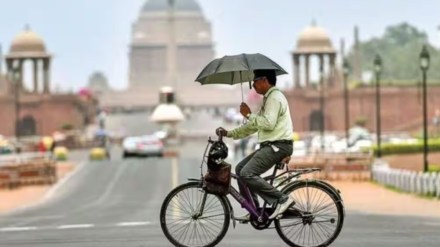By Dr Archana Shrivastava
A report by the International Energy Agency (IEA), 2021 provides a comprehensive overview of India’s energy scenario, highlighting key trends in the country’s energy consumption, production, and policy initiatives. The report highlights that although India uses only 6% of the world’s primary energy, it is the third-largest national emitter, releasing 2.4 gigatons of carbon dioxide, following China and the United States (IEA, 2021). Despite efforts to diversify, coal remains the main source of electricity in India. The country’s energy demand is expected to increase significantly because of population expansion, rapid urbanization, and economic growth.
Studies indicate that from 1901 to 2018, India’s average temperature rose by 0.7°C. The impacts of this climate change are already visible in the form of water shortages and transformed growing seasons. As a country with 17 percent of the world’s population, India has the responsibility to balance development with environmental conservation. Acknowledging the urgent situation, India has pledged to achieve net-zero emissions by 2070. Aiming to achieve 450 GW of renewable energy capacity by 2030, the country is taking impressive steps to expand its renewable energy capacity, particularly in solar and wind power.
Speaking at the opening ceremony of the high-level segment at COP 28 in UAE, Prime Minister Narendra Modi proposed to host CoP33 in 2028 in India, demonstrating India’s commitment to global environmental leadership. The country has played a constructive role in international climate negotiations and has implemented various national policies to improve energy efficiency and develop clean energy sources. Through global collaboration, India launched the Green Credit Initiative in conjunction with the United Arab Emirates. This initiative underscores the importance of economic strategies aligned with environmental objectives. The updated National Action Plan on Climate Change will aim to reduce emissions intensity by 45% by 2030. According to the PIB 2022 report by the Government of India, the country targets achieving 50% of its cumulative electric power from non-fossil-fuel-based energy resources by 2030. The 2020 Human Development Report suggests that to overcome the challenges, India is focusing on increasing its solar capacity and expanding to 450 GW of renewable energy capacity by 2030.
Beyond political commitments, the engagement of the Indian population is vital for the success of these strategies. With the intention of exploring how aware Indians are of global warming issues and what their beliefs, attitude and behaviour are to support the cause, Yale Program on Climate Change Communication conducted a study on the Indian population.
The study found that nearly half of the population knows very little about global warming, while only 10% claim to know “a lot.” However, the study also claims that, though the term ‘global warming’ was not well understood, a large majority of Indians expressed concern about environmental hazards affecting their local areas. They shared their concerns related to agricultural pests and diseases (87%), species extinction (86%), severe heat waves (85%), droughts and water shortages (85%), air pollution (85%), famines and food shortages (83%), cyclones (76%), and floods (71%). According to the report, 85% of the people have experienced the effects of global warming, and 52% believe it is mostly caused by human activities. Further, the report also shares some encouraging results, showing many Indians are confident that their family and friends (78%), local communities (68%), and state and local governments (62%) can help prepare for and respond to extreme climate issues.
As we navigate the intersection of population, policies, and their implementation, effective communication is indispensable in fostering awareness and driving actions to mitigate global warming. Raising awareness about the severity of the climate crisis, its local manifestations, and the necessary actions to mitigate and adapt is key. Climate communicators must convey the science in an accessible manner and inspire individuals, communities, and policymakers to take meaningful steps. Robust climate communication can drive behavioural changes, spur climate action, and ensure marginalized communities receive the support they need.
The challenge that climate communication experts in India may face is addressing diverse communities, from rural farmers to urban dwellers. The best way is to tailor messages specific to local contexts by incorporating traditional knowledge. This may enhance the relevance and impact of climate communication efforts, leading to more inclusive and effective climate action.
However, climate communication is complex. Balancing the urgency of the situation with maintaining hope, while translating scientific data into relatable terms, requires a nuanced approach. Failure to do so can lead to apathy, denial, or backlash, hindering progress. Effective climate communication must go beyond simply stating facts; it requires crafting narratives that resonate with diverse audiences, highlighting personal and community impacts, and offering solutions that empower action. Only through a sustained and strategic approach to climate communication can we drive the transformative changes needed to secure a sustainable future for India and the world. By prioritizing climate communication, we can empower India to lead the way in building a more resilient and sustainable future. Leveraging various media channels, storytelling techniques, and community-based approaches can reach and engage a wide range of stakeholders.
Author is Associate Professor, Birla Inst. of Management Technology- BIMTECH.
Disclaimer: Views expressed are personal and do not reflect the official position or policy of Financial Express.com. Reproducing this content without permission is prohibited.
